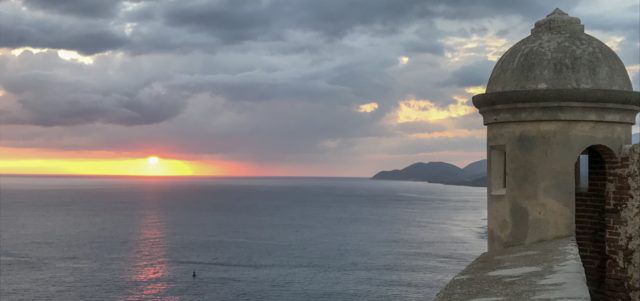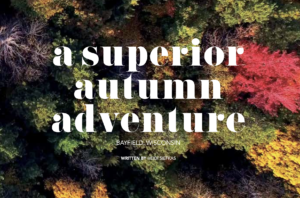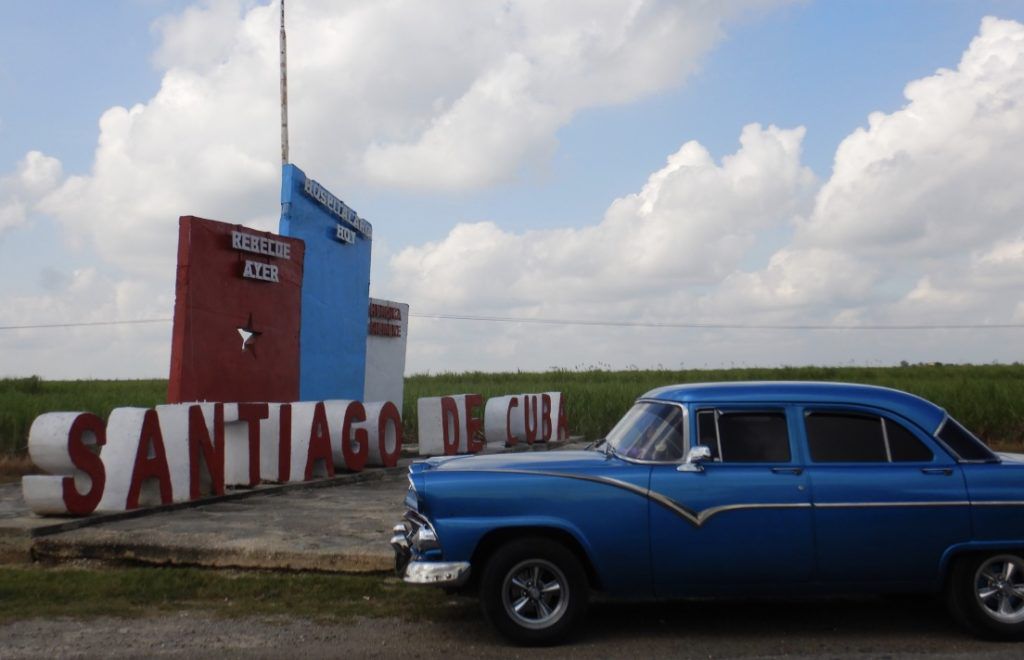
Why Travel to Santiago de Cuba?
Santiago de Cuba (St. James of Cuba) is the major city of the Oriente (Eastern portion of Cuba), comprised of six provinces. Santiago de Cuba is the second largest city in Cuba with nearly 600,000 inhabitants. In fact, Santiago was the capital of Cuba before La Habana; thus, its cultural and historical significance to Cuba is tremendous. In fact, every historical wave from the Spanish colonization to the Cuban independence movement and the Revolution moved from East to West in Cuba, always starting in the Oriente.
If you have not yet discovered Santiago, I would highly recommend you do. After you have toured the city center, the Bacardi Factory, the Moncada Garrison, and the cemetery where both José Martí and Fidel Castro are buried, do NOT miss these three adventures.
Three Adventures NOT to Miss in Santiago de Cuba
San Pedro de La Roca Castle
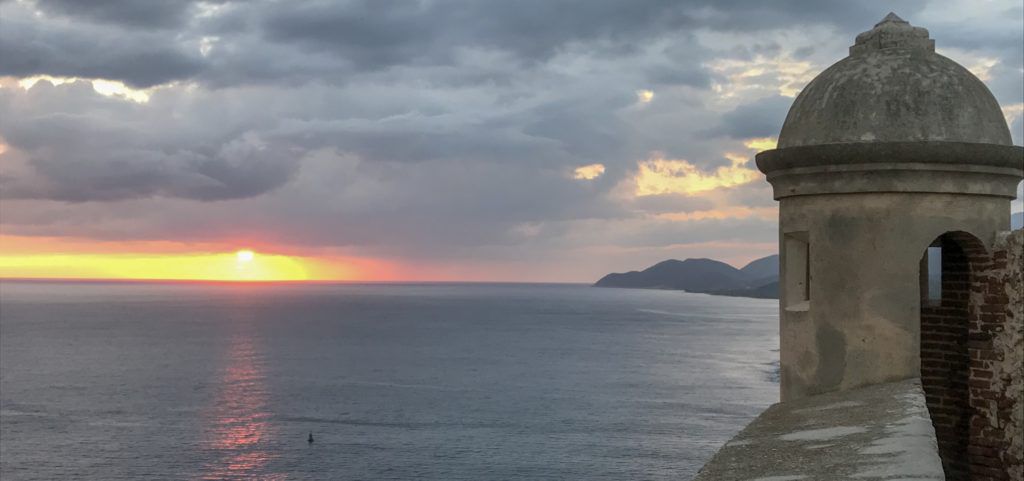 The Castle of San Pedro de La Roca at sunset is on my top sunsets in the world. Built in the 17th century, this fortress is located at the entrance of the port of Santiago. This architectural feat, which took the majority of the 1600s to complete is a UNESCO heritage site with a museum inside. The castle was built for protection because of pirates, but it also served as a prison for many that were against the Spanish rule over the island. As I mentioned, the sunset is not to be missed. Hint: the best view of the sunset is from El Balcón de la Reina (Queen’s Balcony).
The Castle of San Pedro de La Roca at sunset is on my top sunsets in the world. Built in the 17th century, this fortress is located at the entrance of the port of Santiago. This architectural feat, which took the majority of the 1600s to complete is a UNESCO heritage site with a museum inside. The castle was built for protection because of pirates, but it also served as a prison for many that were against the Spanish rule over the island. As I mentioned, the sunset is not to be missed. Hint: the best view of the sunset is from El Balcón de la Reina (Queen’s Balcony).
Gran Piedra (Great Rock)
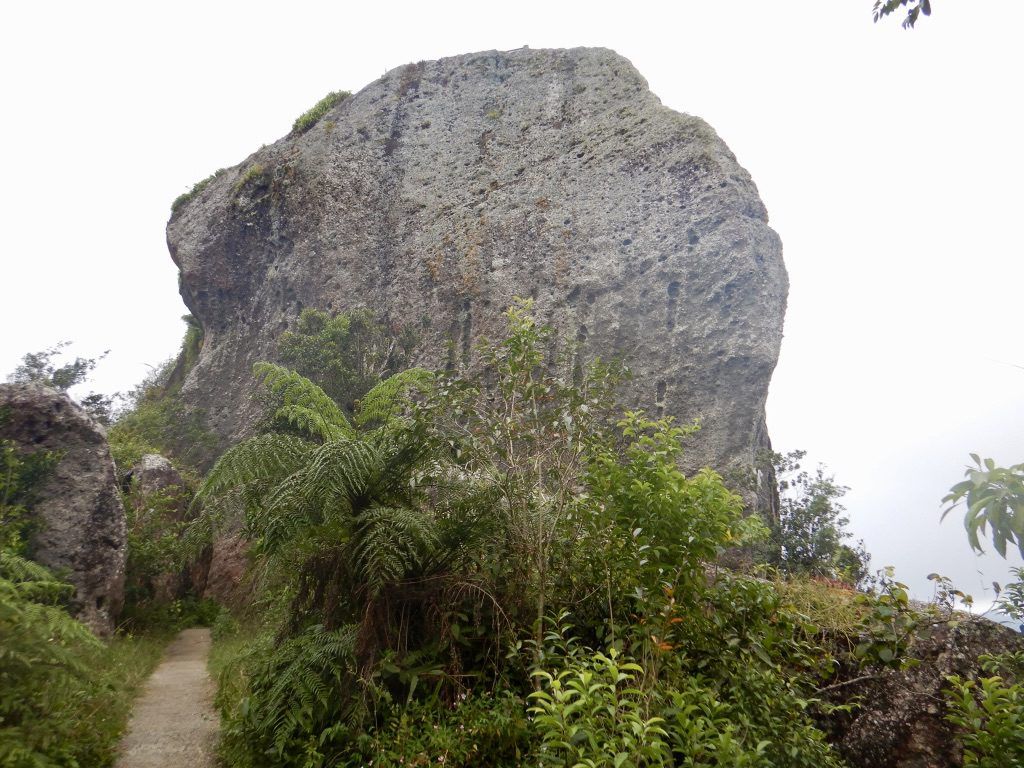 The Gran Piedra is a volcanic rock located about 27 km outside of Santiago. To get to the grand rock is a grand feat as it is a very aggressive drive up the mountain. However, once you arrive it is a fairly easy walk/hike with stairs to the top for an amazing 360 view of the dense, tropical jungle, coastline, and Santiago.
The Gran Piedra is a volcanic rock located about 27 km outside of Santiago. To get to the grand rock is a grand feat as it is a very aggressive drive up the mountain. However, once you arrive it is a fairly easy walk/hike with stairs to the top for an amazing 360 view of the dense, tropical jungle, coastline, and Santiago.
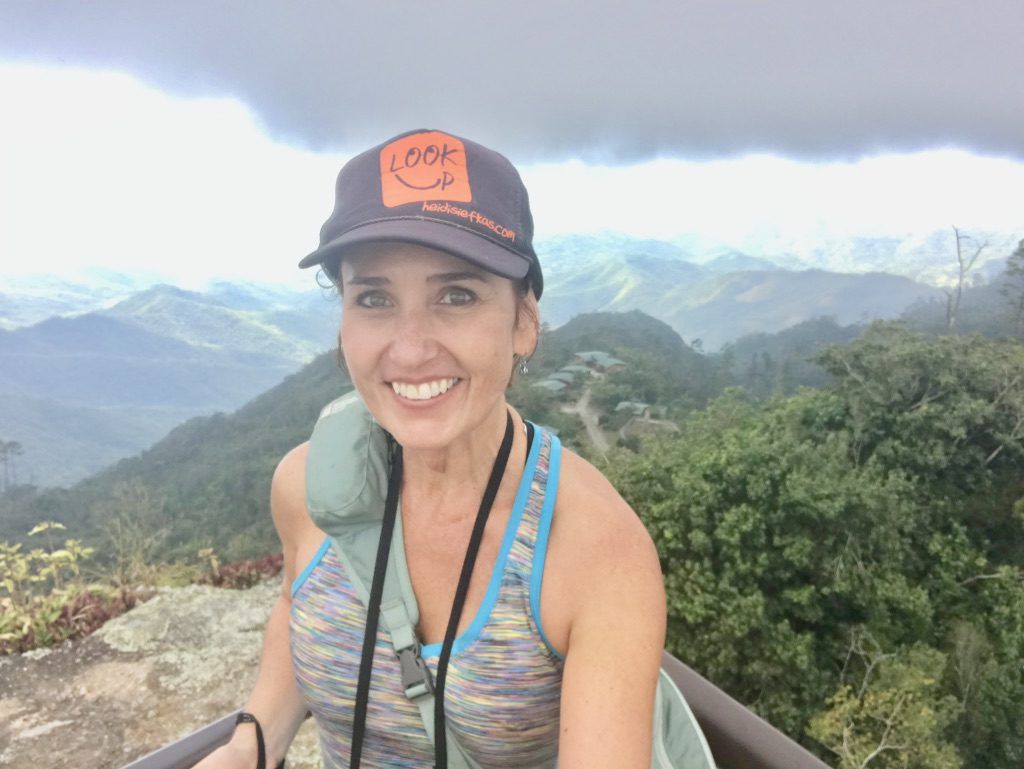
El Cobre
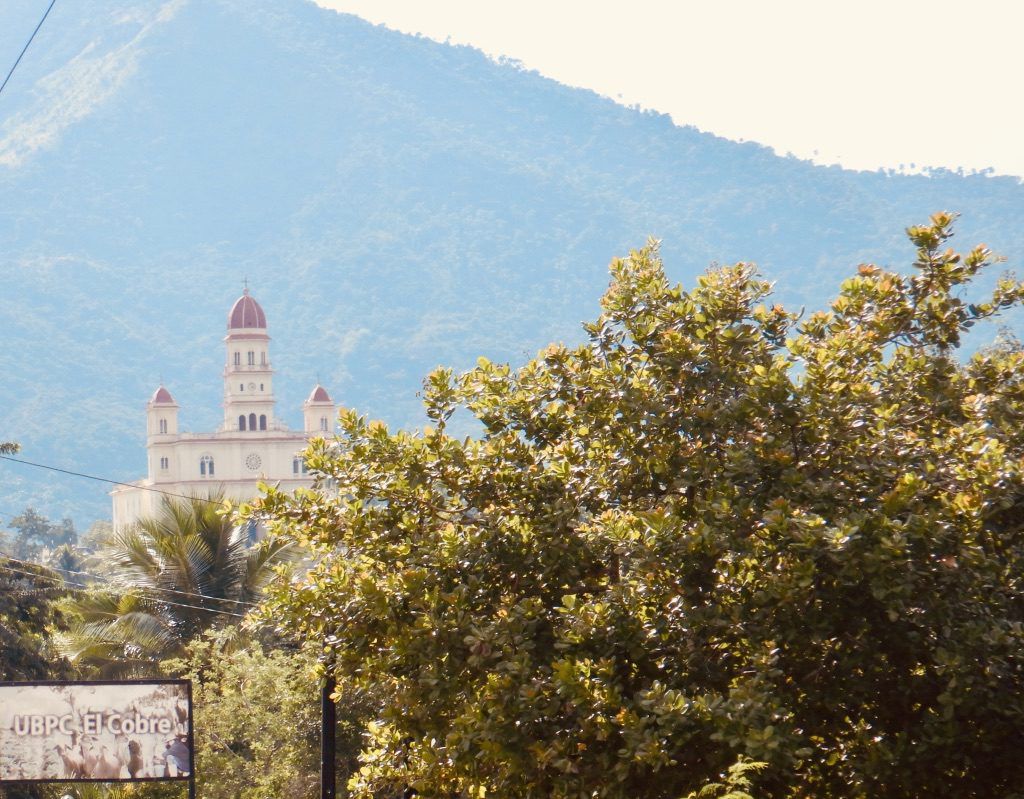 The last adventure I would recommend is taking a pilgrimage to El Cobre. This old mining town is located about an hour and a half drive from Santiago. Its name Cobre comes from the copper mines that were there. El Cobre is important to Cuban culture as the patron saint of Cuba is said to reside at Cobre, la Señora de la Caridad de Cobre (Woman of the Charity of Copper). The pilgrimage to El Cobre is similar to the Camino de Santiago that I did in 2018 twice; however, what is unique is that this spiritual pilgrimage is for both Catholics and those practitioners of the Afro-Cuban religion, Santeria. You will see many leaving gifts for la Señora, including Ernest Hemingway who dedicated and gave his prize for Whom the Bell Tolls to Cobre. You may decide to bring candles and/or sunflowers to Cobre. There are many opportunities to purchase at small gift shops and stands along the way to Cobre.
The last adventure I would recommend is taking a pilgrimage to El Cobre. This old mining town is located about an hour and a half drive from Santiago. Its name Cobre comes from the copper mines that were there. El Cobre is important to Cuban culture as the patron saint of Cuba is said to reside at Cobre, la Señora de la Caridad de Cobre (Woman of the Charity of Copper). The pilgrimage to El Cobre is similar to the Camino de Santiago that I did in 2018 twice; however, what is unique is that this spiritual pilgrimage is for both Catholics and those practitioners of the Afro-Cuban religion, Santeria. You will see many leaving gifts for la Señora, including Ernest Hemingway who dedicated and gave his prize for Whom the Bell Tolls to Cobre. You may decide to bring candles and/or sunflowers to Cobre. There are many opportunities to purchase at small gift shops and stands along the way to Cobre.
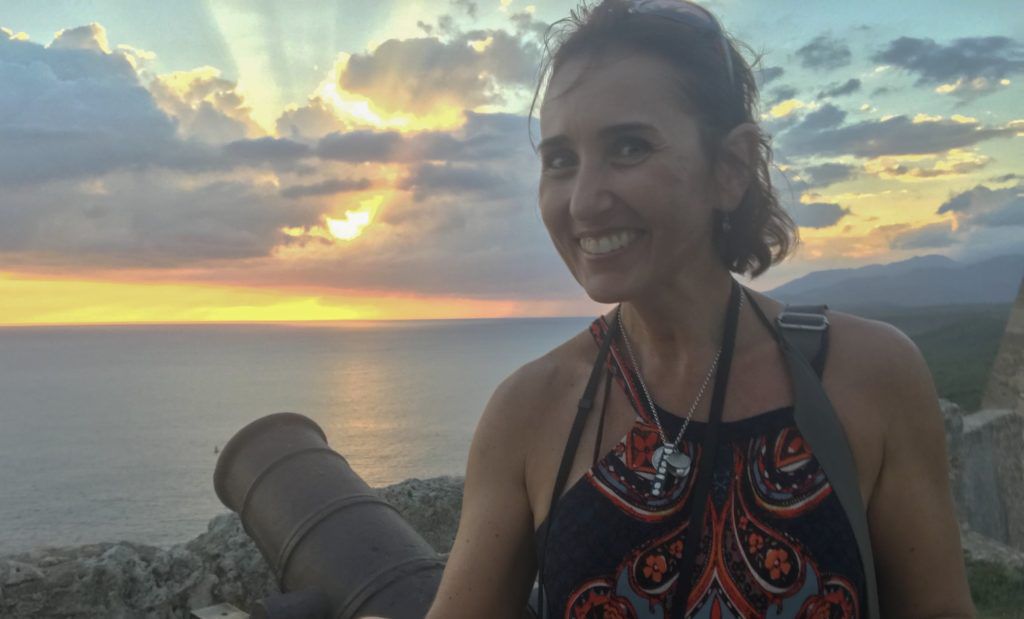 The Oriente of Cuba is untapped, authentic, and rich in culture and history. If you would like to go to Santiago de Cuba and my favorite city, Baracoa, with me, reach out to me for details on a private tour (combo of active, outdoor adventures and cultural visits) I will be leading in 2020. AND, before you ask, YES, United States citizens can still travel to Cuba. There have been announcements of changes as of April 17th, 2019,
The Oriente of Cuba is untapped, authentic, and rich in culture and history. If you would like to go to Santiago de Cuba and my favorite city, Baracoa, with me, reach out to me for details on a private tour (combo of active, outdoor adventures and cultural visits) I will be leading in 2020. AND, before you ask, YES, United States citizens can still travel to Cuba. There have been announcements of changes as of April 17th, 2019, but no changes as of yet. As of June 5th, 2019, the changes to US travel have eliminated cruises to Cuba and People-to-People travel. However, Americans can still travel to Cuba. So, NOW is the time to book travel to Cuba. Read how.
As always, here’s to looking up!

